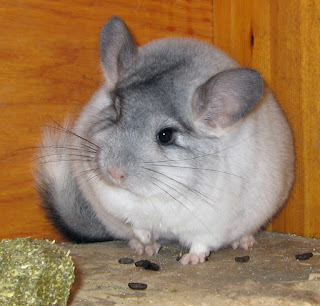If you’re looking for a cute, perky, little pet, a chinchilla may be the perfect companion for you. Chinchillas are crepuscular rodents, slightly bigger than the common ground squirrels. They are native to the Andes mountains in South America and have become a popular pet over the past few years. These little furballs have a number of characteristics which make them great pets. However, chinchillas are not for everyone. Below are a few things you should know about chinchillas.
Where do they come from?
Chinchillas originated from the Andes mountains and are named after the Chincha people of the Andes who use to hunt them for their dense, velvet-like fur. There are two species, Chinchilla lanigera and Chinchilla chinchilla. Domesticated chinchillas are thought to have come from the C. lanigera species since these animal are actually considered Critically Endangered on the the IUCN Red List. so if you ever do get a chinchilla, make sure they come from a reputable breeder and not from the wild.
Pros and Cons
Chinchillas are covered with soft fur and are naturally curious. They make very little noise and are low-maintenance pets. They’re perfect for a small home, like an apartment or a condo, since they really don’t need a lot of space, as long as you give them enough exercise. On the down side, they can be high-strung, and they have relatively short attention spans. They also can’t tolerate places with hot weather or high humidity well, so you need to keep them cool if you’re living in a warm place.
Buying A Chinchilla
Most pet stores often times sell chinchillas that are not well-bred and are unhealthy. And since these animals are considered critically endangered in the wild, you need to be very careful about where you get the chinchilla. Your best bet is to find a reputable breeder in or close to your area, such as those that are members of The Chinchilla Club. Never hesitate to ask questions about what type of chinchilla it is and ask for reference to previous clients. If possible, check both the parents and the youngster for any health problems before you buy the Chinchilla. Be watchful of pasty or watery eyes, drooling (which indicates tooth alignment problems), wool pulling or missing areas of fur. Common problems see in pet store purchased chinchillas are wool pulling due to boredom and stress and malocclusion due to improper diet and genetics.
Chinchilla Personalities and Characteristics
These cute animals have their own personalities, much like cats and dogs. Since they live in groups in the wild, they’re naturally social creatures. They go along well with other animals, as long as they are socialized at a young age. You need to handle them and pet them regularly so they’ll get used to you, or they’ll end up becoming aggressive and skittish. An ideal age to purchase your chinchilla is 10 weeks of age. Adult female chinchillas weight about a pound-and-a-half and are a bit bigger than males. Chinchillas can live 12 to 20 years, which is an exceptionally long lifespan for a rodent. They have an exceptionally long pregnancy which last about 111 days. Babies come out covered in fur with eyes already open, like their distant cousins the guinea pigs.
Do's for maintenance
Keep a chinchilla in a mesh cage that’s pretty spacious for their size. To help keep it clean, a dripping pan should be inserted under the cage to catch the chinchilla’s poo and pee. As much as possible, you don’t want your chinchilla to run free since they could end up chewing on furniture, as well as be exposed to household toxins. Chinchillas love cardboard boxes to hide in, as well as ledge shelves to bask on. They also love dust bathing so give them a shallow dish or crock with cornstarch or cornmeal.
Place shavings on the bottom of their cage. They don't need a special bedding. The usual hamster or gerbil bedding you find in most pet stores will do. Their cage needs to be cleaned regularly. You can use baking soda and sprinkle it on the corner where the chinchilla eliminates to help reduce odor, but compared to other pet rodents, chinchillas are not that smelly. Place your cage out of drafts and strong direct sunlight. But keep in mind that you have to keep the chinchillas in a cool place since they don’t do well in heat.
They should have a food bowl (avoid plastic) and water bottle with a ball bearing sipper tube. Placing a metal shielding for plastic water bottles is advisable as chinchillas quickly chew through the bottles. Adding toys and an activity wheel helps keep your chinchilla happy. Chewing blocks help keep their jaws healthy and their teeth worn down. You can also give theme vegetables like carrots or fruits like apples to chew and gnaw on.



























